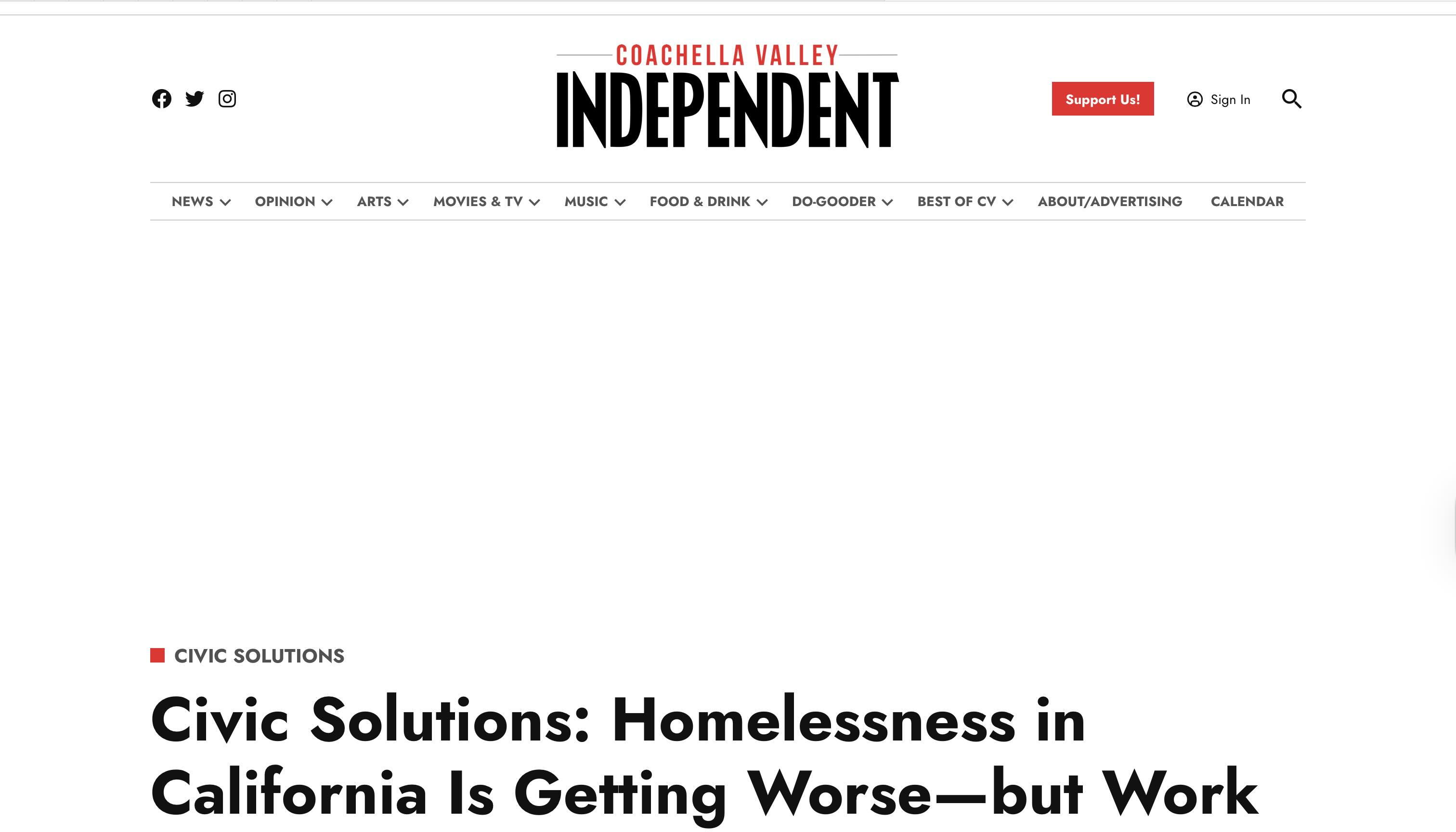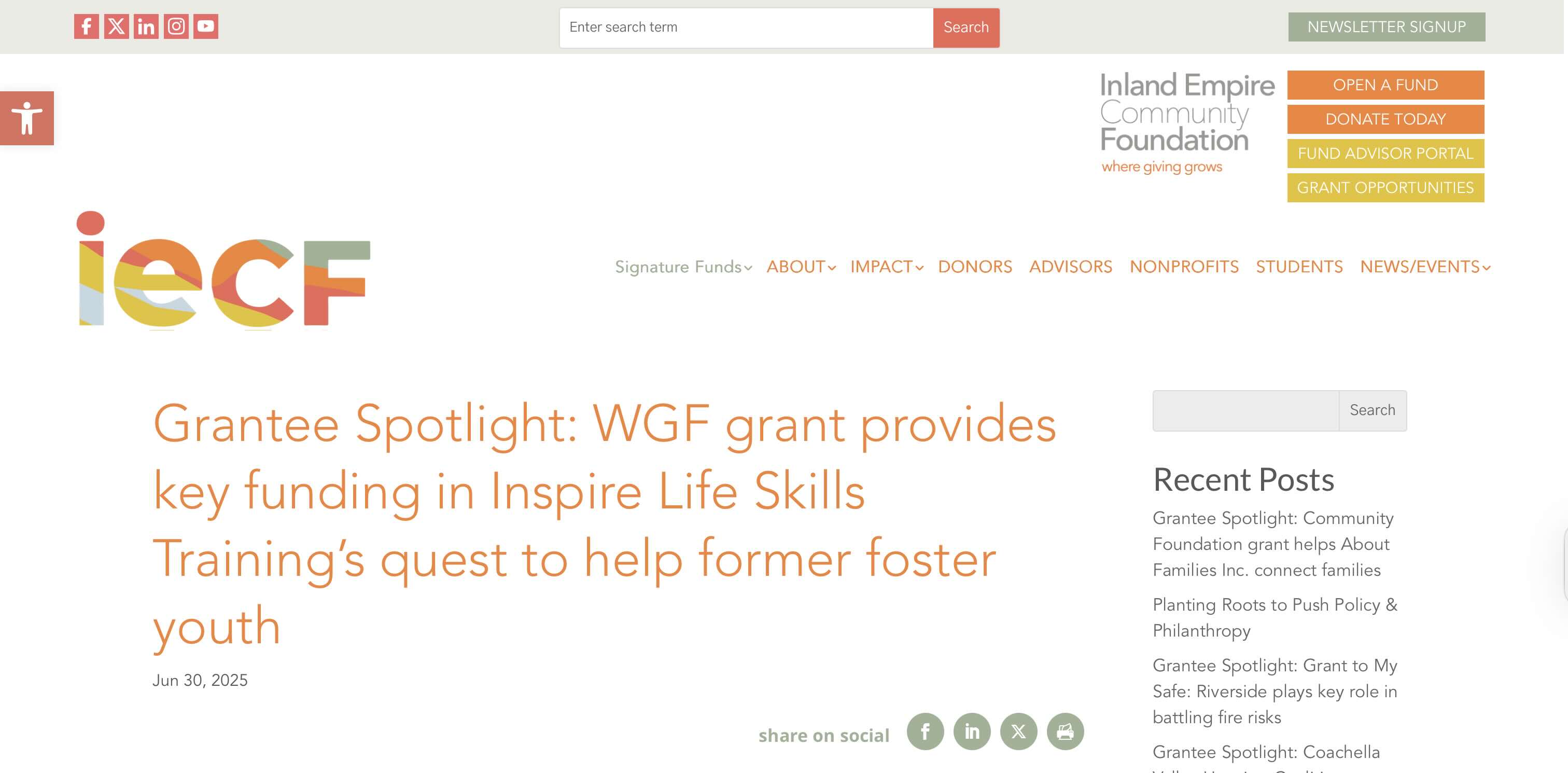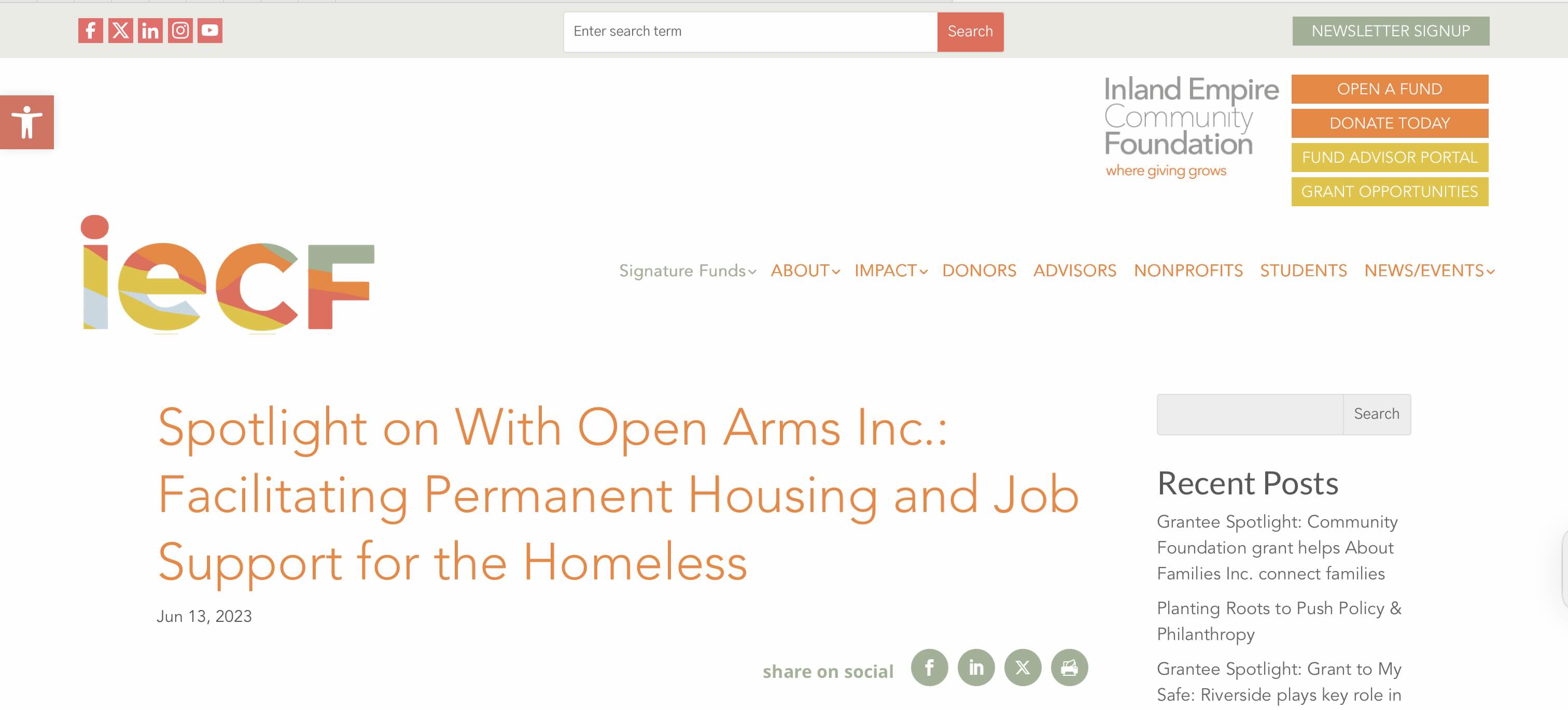People Experiencing Homelessness
On a single night in January 2023, over 650,000 Americans were experiencing homelessness. Over 20% of those were people experiencing chronic homelessness. Additionally, veterans make up roughly 40,000 and unaccompanied youths make up around 34,000 people who are homeless. At least 20 people experiencing homelessness die every day in the U.S., and in 2020, close to 8,000 homeless people lost their lives, a number that increased in 2019 and 2018. Thirty-eight percent of homeless people are physically challenged, 25% have mental illness, and the average life expectancy of a homeless individual is only 50 years.
From 2010 to 2017, the United States witnessed an increase in homelessness for the first time in seven years, reaching over half a million people. The Covid-19 pandemic exacerbated homelessness in the U.S. Most shelters closed their doors creating a void in social support to aid the crisis. This upward trend contributes to a breakdown in quality of life over time. For example, families with children make up 30 percent of the homeless population and there the number of homeless students has also increased. The homeless population often faces lack of access to quality health care, nutrition, and treatment regimens, leaving them vulnerable to poor health outcomes. Although the homeless population in the U.S. is diverse, there is evidence of inequalities among subgroups. Homelessness risk in the U.S. is linked to race, ethnicity, and gender. Males are more likely to experience homelessness compared to females and the number of people from the LGBTQ+ population is on the rise. Although white people make up the highest percentage of the homeless population in the U.S. by race, most minority groups—especially Black and Indigenous people—experience homelessness at higher rates than white people. The most striking disparity can be found among Black people, who represent 13% of the general population but account for 37% of people experiencing homelessness.
The homeless population is more at risk for poor mental health, and as a result more police encounters leading to arrest. This victimizes homeless people and prevents them from experiencing re-entry to society. All of these factors can create despair and can lead to substance abuse over time. The rise of homelessness is caused in part by stagnant wages, unemployment, lack of affordable housing, lack of affordable healthcare, poverty, lack of mental health and addiction treatment services, racial inequality, domestic violence, family conflict, and systemic failures.
Communities can work to prevent and decrease homelessness by using proactive screening of populations at heightened risk of homelessness, investing in eviction prevention programs, and advocating for permanent deep rental property subsidies. Homeless people often rely on emergency rooms for healthcare services, which is a financial burden on the system—mobile and street clinics in cities most in need can be implemented at the systems level to help alleviate the burden of health care cost. Other solutions include increasing access and awareness of public health services, access to medical care, health insurance coverage.
Resources & Tools
Trauma-Informed Organizational Toolkit For Homeless Services
Resource - Guide/handbook
Brought to you by U.S. Department of Health and Human Services
The Intersection of Housing and Mental Well-Being: Examining the Needs of Formerly Homeless Young Adults Transitioning to Stable Housing
Resource - Journal Article
Brought to you by NLM
District of Columbia B24-0941: Fostering Stable Housing Opportunities Amendment Act of 2022
Resource - Report
Brought to you by Health Impact Project
In Common Newsletter: An Introduction to Stewardship
Resource
Brought to you by Community Commons
Published on 05/03/2023
State Laws to Support Youth Experiencing Homelessness
Resource
Brought to you by SchoolHouse Connection
Exploring the Link Between Housing Stability and Mental Health
Resource - Blog
Brought to you by National League of Cities
The Long Road Home: Decreasing Barriers to Public Housing for People With Criminal Records
Resource - Assessment
Brought to you by Health Impact Project
Published on 04/30/2016
Chart Book: Housing and Health Problems are Intertwined. So are Their Solutions.
Resource
Brought to you by Center on Budget and Policy Priorities
The Long Road Home: Decreasing Barriers to Public Housing for People With Criminal Records
Resource - Assessment
Brought to you by Ella Baker Center for Human Rights
Without Affordable, Accessible, and Adequate Housing, Health Has No Foundation
Resource - Journal Article
Data Sharing Helps Reduce the Number of Homeless Veterans
Resource
Brought to you by The Pew Charitable Trusts
A Perfect Storm: Extreme Weather as an Affordable Housing Crisis Multiplier
Resource - Report
Brought to you by Center for American Progress
Ending Veteran Homelessness Map
Resource - Map
Brought to you by National Alliance to End Homelessness
Pathways to Partnership: Early Childhood
Resource - Guide/handbook
Brought to you by SchoolHouse Connection
Lack of Housing and Mental Health Disabilities Exacerbate One Another
Resource - Blog
Brought to you by Center for American Progress
Falling Through the Cracks: Graduation and Dropout Rates Among Michigan’s Homeless High School Students
Resource - Policy Brief
Brought to you by University of Michigan
Deeper Dives for Schools: Practical Strategies to Serve Young Children Experiencing Homelessness
Resource - Fact Sheet
Brought to you by SchoolHouse Connection
Los Angeles Homeless Initiative
Resource - Fact Sheet
Brought to you by American Institutes for Research in the Behavioral Sciences
Michigan Statewide Housing Needs Assessment
Resource - Report
Brought to you by University of Michigan School of Public Health
Indiana SB 464: Homeless Children and Youths
Resource - Report
Brought to you by Health Impact Project
Homelessness, Housing Instability and Mental Health: Making the Connections
Resource - Journal Article
Brought to you by NLM
Family Residential Instability: What Can States and Localities Do?
Resource - Policy Brief
Brought to you by Urban Institute
Consumer Employment in the Health Care for the Homeless Setting: Promising Practices
Resource - Case Study
Charlotte Area Transit System Blue Line Extension
Resource - Assessment
Brought to you by Health Impact Project
Published on 06/30/2015
Taking the Heat Off Marginalized Communities: Disparities in Extreme Heat
Resource - Blog
Brought to you by Southern California Grantmakers
City Residents Support Public Health Approaches to Drug Use, Homelessness: A Messaging Playbook
Resource - Blog
Brought to you by BCHC
Neenah-Menasha Sewerage Commission Biosolids Storage Facility
Resource - Assessment
Brought to you by Health Impact Project
Measure H: Preventing and Reducing Homelessness in Los Angeles County
Resource - Assessment
Brought to you by Health Impact Project
Published on 02/01/2017
Fact Sheet: Cost of Homelessness
Resource - Fact Sheet
Brought to you by National Prevention Science Coalition to Improve Lives
Crosswalk of Key Federally-funded Child and Youth Homeless Contacts
Resource
Brought to you by US HUD
Metro Westside Subway Extension (Wilshire Corridor)
Resource - Assessment
Brought to you by Health Impact Project
Published on 01/01/2012
Recent Trends in Housing Cost Burden Among U.S. Military Veterans
Resource - Report
Brought to you by RAND Corporation
Five Steps to End Veteran Homelessness
Resource - Blog
Brought to you by National Alliance to End Homelessness
Concord Naval Weapons Station Reuse Project
Resource - Assessment
Brought to you by Health Impact Project
Published on 12/31/2008
Understanding Encampments of People Experiencing Homelessness and Community Responses: Emerging Evidence as of Late 2018
Resource - Report
Brought to you by US HUD
BIPOC? Latinx? Here's How to Describe People Accurately
Resource - Guide/handbook
Brought to you by NPR
Guidance for Domestic Violence Partners and CoCs on Participating in the PIT Count
Resource
Brought to you by US HUD
Replacing Public Housing Units Destroyed by Hurricane Ike
Resource - Assessment
Brought to you by Health Impact Project
Springboard Collaborative Brings Innovative Housing to Sussex County
Resource - Blog
Brought to you by Spotlight Delaware
City Residents Support Public Health Approaches to Drug Use, Homelessness: A Messaging Playbook
Resource - Guide/handbook
Brought to you by BCHC
Substance Abuse and Homelessness: Statistics and Rehab Treatment
Resource - Guide/handbook
Brought to you by American Addiction Centers
SOH: State and CoC Dashboards
Resource - Data Bank/repository
Brought to you by National Alliance to End Homelessness
Police Know Arrests Won’t Fix Homelessness. They Keep Making Them Anyway.
Story - Written
Brought to you by Center for Investigative Reporting
Published on 06/23/2022
An Experiment Doled Out Money to Homeless People in Denver, No Strings Attached. Here’s What Happened.
Story - Written
Brought to you by The Colorado Sun
Published on 06/19/2024
Downtown Women’s Center: A Journey Towards a Trauma-Informed Community
Story - Written
Brought to you by Community Commons
Can a Big Village Full of Tiny Homes Ease Homelessness in Austin?
Story - Written
Brought to you by NYT
Prescription for Housing? California Wants Medicaid to Cover 6 Months of Rent
Story - Written
Brought to you by KHN
Caritas of Austin Uses Multi-Solving and Non-Traditional Partnerships to Decrease Veteran Homelessness
Story
-
 Original
Original
Published on 11/29/2023
Hotel Rooms for the Homeless Change Health Outcomes Beyond COVID
Story - Written
Brought to you by Shelterforce
Homeless at Starbucks: Why the Coffee Chain is Bringing in Outreach Workers
Story - Written
Brought to you by The Guardian
One WA School District Helped Homeless Students Graduate. Can Others?
Story - Written
Brought to you by The Seattle Times
Related Topics














.jpg)
















































































